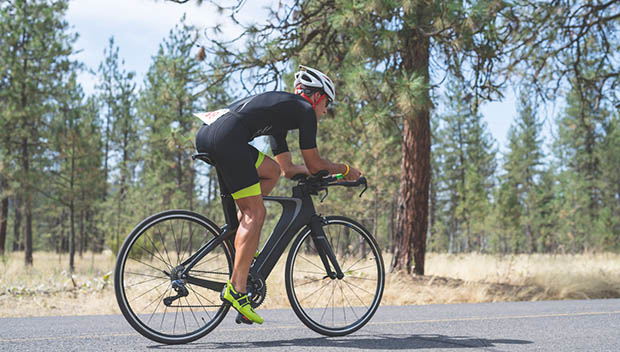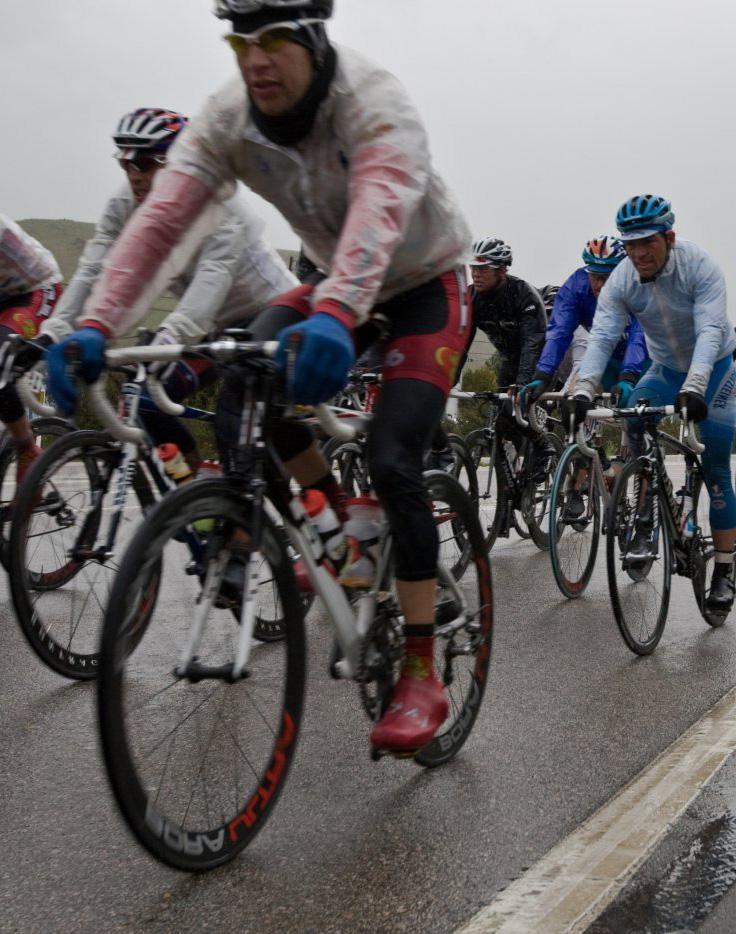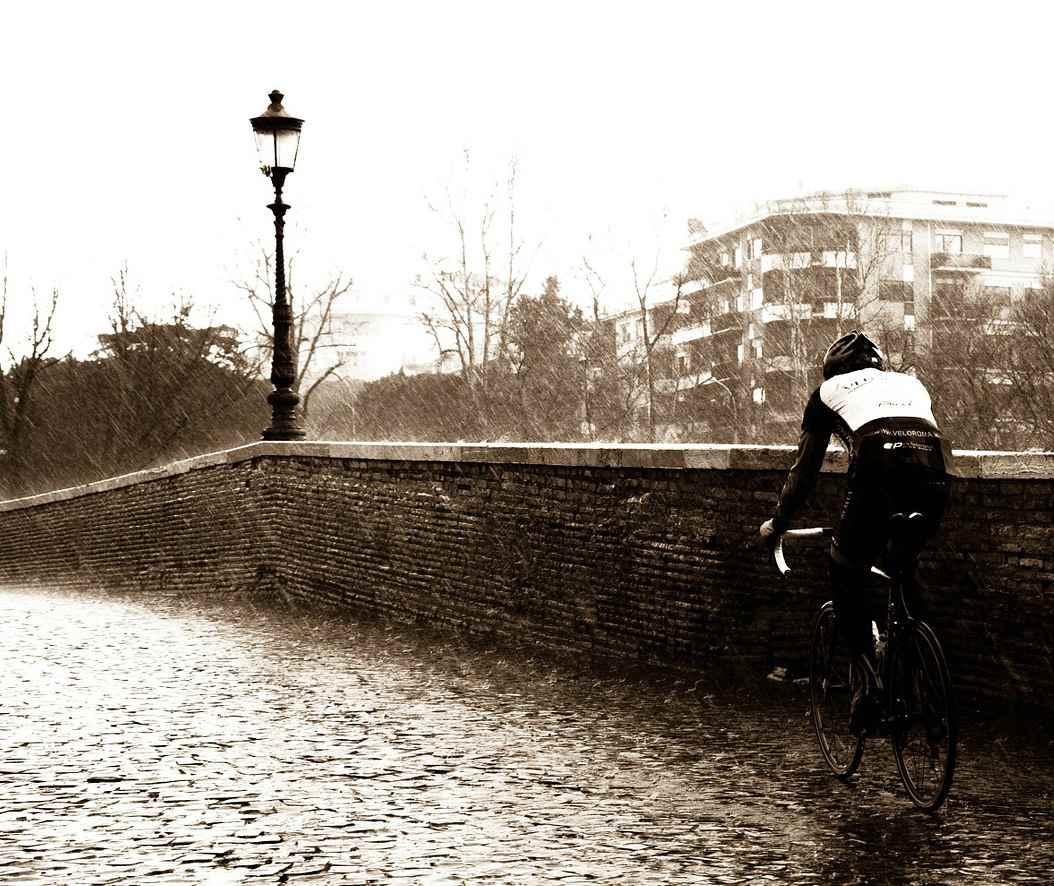Si te has interesado por el título de este artículo es porque, seguramente, estás pensando en iniciarte en la práctica del triatlón. Es un deporte que crece año a año y que cada vez cuenta con más practicantes.
Dado que se trata de una modalidad que combina tres disciplinas distintas (natación, ciclismo y atletismo), es normal que muchas de las personas que quieren iniciarse en el triatlón no sepan por dónde empezar y se sientan un poco perdidos.
Lo ideal es que cuentes con un entrenador personal especializado en triatlón. Pero mientras lo encuentras, aquí tienes una guía básica de ejercicios y un plan de entrenamiento para que afrontes tu primera prueba con garantías.

Cómo entrenar el segmento de natación
Si no eres un gran nadador y dudas de que tu técnica sea correcta, es recomendable que te apuntes a clases de natación. En muchas piscinas municipales se ofrecen clases tanto de aprendizaje como de perfeccionamiento técnico. Te saldrá más económico incluso que nadar por tu cuenta.
Además, vas a mejorar mucho más, ya que la técnica es fundamental en el segmento de natación. Nadar contra el agua es lo peor que puedes hacer, necesitas aprender afluir dentro de ella.
“Nadar contra el agua es lo peor que puedes hacer, necesitas aprender a fluir dentro de ella”
En el caso de que ya hayas practicado natación con anterioridad, seguramente ya sabrás cómo realizar el entrenamiento básico. Ante la duda, aquí tienes dos consejos:
- Dedica el día posterior a los entrenamientos más extenuantes para practicar la técnica, nadando sin mucha intensidad. Lo más habitual es que ese día sea el lunes, ya que los entrenamientos más duros se suelen hacer en fin de semana. De esta forma, la sesión te servirá para perfeccionar tu técnica de natación y al mismo tiempo para recuperar después de las intensas sesiones del fin de semana.
- Emplea el miércoles o jueves para hace runa sesión más larga e intensiva.
Cómo entrenar el segmento de ciclismo
Aprovecha el fin de semana, o los días que tengas libre, para las sesiones de ciclismo en las que puedas realizar un entrenamiento de mucho volumen.
Esto te servirá para acostumbrarte al tiempo de esfuerzo que dura una prueba de triatlón. Pero si quieres ir un paso allá y planificarte estos volúmenes y esfuerzos, es recomendable que cuentes con la ayuda de un entrenador personal de ciclismo.
Cómo entrenar el segmento de carrera a pie
El sector de carrera para preparar tu primer triatlón lo puedes entrenar a lo largo de la semana, dedicando poco tiempo pero con un entrenamiento de mucha calidad e intensidad. Por ejemplo, el martes, tras la sesión de natación suave de los lunes, puede ser el día perfecto apra trabajar el sector de carrera con las pilas cargadas.
Un error frecuente es dejar de lado los ejercicios de fuerza específica. El entrenamiento de fuerza en triatlón es muy importante para ser más rápido, más resistente y también para prevenir lesiones.

Cómo preparar las transiciones en triatlón
El triatlón no sólo consiste en nadar, pedalear y correr. También hay que saber encadenar un segmento con otro. Por ejemplo, cómo salir del agua y subirse a la bicicleta. O cómo bajarse de la bicicleta y comenzar a correr. Esto es lo que se conoce como transiciones.
Practicar las transiciones entre disciplinas es importante, especialmente cuando se trata de mejorar tiempos. Unas transiciones rápidas te pueden ahorrar muchos segundos, y ya sabes lo que cuesta mejorar esos segundos nadando o corriendo.
Consejos para hacer la transición de natación a ciclismo
Para practicar la transición de natación a ciclismo es importante automatizar los gestos. Sales del agua corriendo y, antes de tocar la bicicleta, debes colocarte el casco y abrochártelo (indispensable no sólo por cuestiones de seguridad, sino porque serás penalizado si te lo olvidas).
La zona de la transición está acotada por un límite a partir de la cuál puedes subirte a la bicicleta. No antes. Corre hacia esa línea sujetando la bicicleta por el sillín, en paralelo a ella. Al llegar a la línea súbete a la bici de un salto.
Da las primeras pedaladas descalzo, con los pies sobre las zapatillas y, cuando ya estés en la dinámica de ciclismo, colócate las zapatillas mientras estás en movimiento. Si esto último te resulta chocante, debes tener en cuenta que en triatlón no te pones las zapatillas antes de subirte a la bicicleta, sino que debes dejarlas colocadas en los pedales.
Practica este gesto tantas veces como necesites para que el día de la prueba te salga de manera automática, casi instintiva, sin pararte a pensar qué paso es el que tienes que seguir a cada momento. Así ahorrarás mucho tiempo.
Consejos para hacer la transición de ciclismo a carrera
Para hacer la transición de ciclismo a carrera el procedimiento es el inverso.
En primer lugar, descálzate mientra estés todavía subido a la bicicleta y da las últimas pedaladas con los pies sobre las zapatillas.
Da un salto y bájate de la bicicleta justo antes de la línea permitida (al igual que hay una frontera que delimita cuándo puedes subirte a la bicicleta en la primera transición, hay otra a partir de la cual ya no puedes seguir encima de ésta en la segunda).
No te desabroches el casco mientras estés en contacto con la bicicleta. Primero deja la bici y luego quítate el casco.
Puedes combinar los dos ejercicios para practicar las dos transiciones al mismo tiempo siguiendo el siguiente esquema:
- Corre descalzo
- Ponte el casco
- Coge la bicicleta y corre de forma parelela a ella sujetándola por el sillín
- Súbete de un salto
- Pedalea descalzo
- Ponte las zapatillas de ciclismo en movimiento
- Da la vuelta
- Descálzate mientras estás encima de la bicicleta
- Pedalea descalzo
- Baja de la bicicleta de un salto
- Deja la bicicleta
- Desabróchate el casco y quítatelo
- Ponte las zapatillas de correr
- Inicia la carrera
- Repite la operación tantas veces como sea necesario
Planifica tus entrenamientos
Es importante tener una planificación de tus entrenamientos. De esta forma trabajarás los grupos musculares y los segmentos de una forma equilibrada y óptima. A continuación te dejo una tabla con un plan de entrenamiento orientativo para preparar un triatlón Supersprint en cuatro semanas.

Cómo afrontar tu primer triatlón
Los ejercicios físicos son una parte fundamental del entrenamiento. Pero no olvides que también es importante prepararse mentalmente. Afronta tu primer triatlón con calma, no te embarques ne un triatlón de larga distancia como primera prueba.
Es mejor que empieces por una carrera corta, como un triatlón Supersprint o un triatlón Sprint. Más adelante, cuando tus sensaciones sean buenas, podrás aventurarte a distancias más largas.

Una vez finalizada tu primera prueba tengo una mala noticia para ti: el virus del triatlón ya te ha picado, el veneno está en tu cuerpo y ya no podrás evitar ir a por la siguiente. ¡Sigue entrenando y nos vemos en próximas carreras de triatlón!
No olvides dejar tus comentarios sobre este artículo.
Fuente: tuvalum.com


 3. Procurati l’equipaggiamento adatto.
3. Procurati l’equipaggiamento adatto. 









































 2. Trockene Füße
2. Trockene Füße Bremsen bei Nässe
Bremsen bei Nässe Bremsen auf Laub
Bremsen auf Laub

 Over doing it on the booze can be a detrimental factor to you efforts in trying to lose weight
Over doing it on the booze can be a detrimental factor to you efforts in trying to lose weight